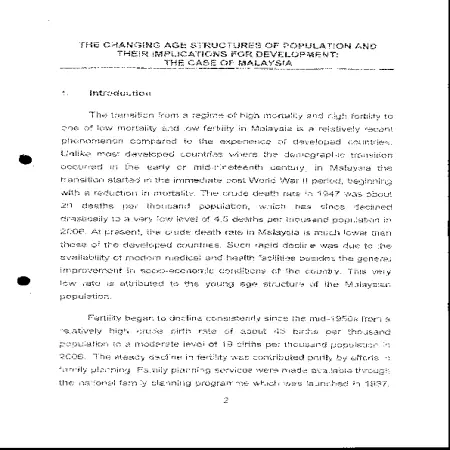| Item type |
Conference or Workshop Item |
| Subjects |
300 Social sciences > 305 Social groups |
| Division/Agency |
LPPKN - National Population and Family Development Board, Malaysia: Population and Family Research Division |
| Keywords |
Fertility, Mortality, Population age distribution, Life expectancy, Population, Family, NPFDB, Malaysia |
| Additional Information |
This paper have been presented at the Population Conference 2008: Youth and the Changing Demographics in Matrade Tower, Kuala Lumpur. |
| Abstract |
The transition from a regime of high mortality and high fertility to one of low mortality and low fertility in Malaysia is a relative recent phenomenon compared to the experience of developed countries. Unlike most developed countries where the demographic transition occurred in the early or mid-nineteenth century, in Malaysia the transition started in the immediate post World War II period, beginning with a reduction in mortality. The crude death rate in 1947 was about 20 deaths per thousand population, which has since declined drastically to a very low level of 4.5 deaths per thousand population in 2006. At present, the crude death rate in Malaysia is much lower than those of the developed countries. Such rapid decline was due to the availability of modern medical and health facilities besides the general improvement in socio-economic conditions of the country. This very low rate is attributed to the young age structure of the Malaysian population. |





